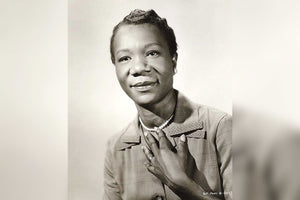Who is Pearl S. Buck?
Pearl S. Buck was a prolific author who earned the Nobel Prize and Pulitzer Price for her writing. She was a passionate humanitarian who founded the Pearl S. Buck foundation with a bid to bring racial harmony for the Asian Americans. She continues to be regarded as a legendary author and humanitarian.
Five Facts About Pearl S. Buck
- She grew up in China and spoke Chinese.
- She was the first American woman to earn both the Nobel and Pulitzer prize.
- She was an advocate for human rights, humanitarian causes and civil rights.
- She kept the last name of her first husband even after their divorce.
- She was the fourth woman overall to win a Nobel prize for Literature.
Inspirational Quotes from Pearl S. Buck
“If you want to understand today, you have to search tomorrow.”
“Many people lose their small joys in the hope for the big happiness.”
Pearl S. Buck Biography
Buck was born as Pearl Comfort Sydenstricker in Hillsboro, West Virginia, on June 26, 1892. Her parents, Absalom Sydenstricker and Caroline Maude were Southern Presbyterian missionaries who had travelled to China but came back to the United States for the birth of Pearl.
With so much commitment to their missionary work, Pearl’s parents went back to China when Pearl was just 5 months old. When Pearl was 6 years old, her mother homeschooled her during the early part of the day and a Chinese tutor took over in the afternoon.
In 1911, she left China to go to the Randolph Macon Women’s College in Lynchburg Virginia. In 1914, she graduated Phi Beta Kappa and became a member of the Kappa Delta Sorority.
She then got a position to become a psychology professor at alma mater right after completing her bachelor’s degree. One semester later, Pearl was forced to return to China after her mother fell ill.
Personal Life
It was in China that Pearl met and fell in love with John Lossing Buck, who was an agricultural missionary. The two got married on May 30, 1917, and they relocated to a small town called the Suzhou, in Anhui Province.
They stayed in Nanjing from 1920 to 1933 where John taught agriculture theory in the University of Nanking and Pearl taught English literature in the same university.
In 1920, the couple was blessed with a daughter, whom they named Carol. Their daughter was mentally disabled, and Buck spent most of her time taking care of her. One year later, Pearl’s mother died from a tropical disease.
They then left for the United States during her husband’s year of sabbatical. It was here thar Pearl earned her master’s degree from the Cornell University and they adopted Janice whom they later named Walsh.
John and Pearl’s marriage came to an end in 1935. After their divorce, Pearl went ahead t married Richard Walsh, who was her publishing agent.
Writing
Pearl began writing in the nineteen twenties, when her parents were ailing, and their finances were in bad shape. Pearl published her first novel, East Wind, West Wind, in 1930. The novel talked about the difficult transition of China from old traditions to the new way of life.
She then published her second novel, The Good Earth, which earned her the Pulitzer Prize. This novel focuses on the life of Chinese peasants as she recalled her memoir in Shanghai. The novel also had a long standing on America list of best sellers, and she was also able to earn the William Dean Howells Medal.
In 1933, Pearl earned an extra master’s degree at Yale University. She then attained the distinction of being the first woman in America and fourth overall to get a Nobel Prize in Literature.
Her other novels include Sons (1932), The First Wife and Other Stories (1933), All Men are Brother (1933), The Mother (1934), A House Divided (1935), and This Proud Heart (1938). Her other popular novels include the China Sky (1941), The Dragon Seed (1942), The Water Buffalo Children (1943) and a cookbook on Asian cuisine named Pearl. S Buck’s Oriental Cookbook (1972).
Advocate for Human Rights, Civil Rights and Humanitarian Cause
Other than writing, Pearl was also involved in humanitarian efforts in a bid to offer protection for Asian Americans from racial intolerance. She established the East and West Association in 1941, that sought to enhance the living conditions of poor Asian Americans.
In 1949, Pearl also founded the Adoption Agency Welcome House whose main goal was to adopt Asian-American children. In support of these ends, she established the Pearl S. Buck Foundation in 1964, that strove to address the issues of discrimination and poverty that children in Asian countries faced.
She then made her personal estate the future headquarters for Pearl S. Buck International in 1973.
Later Life and Death
Pearl did in Danby, Vermont, on March 6, 1973 from lung cancer.
![]() Fast Shipping
Fast Shipping![]() Subscribe to our Newsletter
Subscribe to our Newsletter![]() 🌟 New Global Competition 🌟
🌟 New Global Competition 🌟















